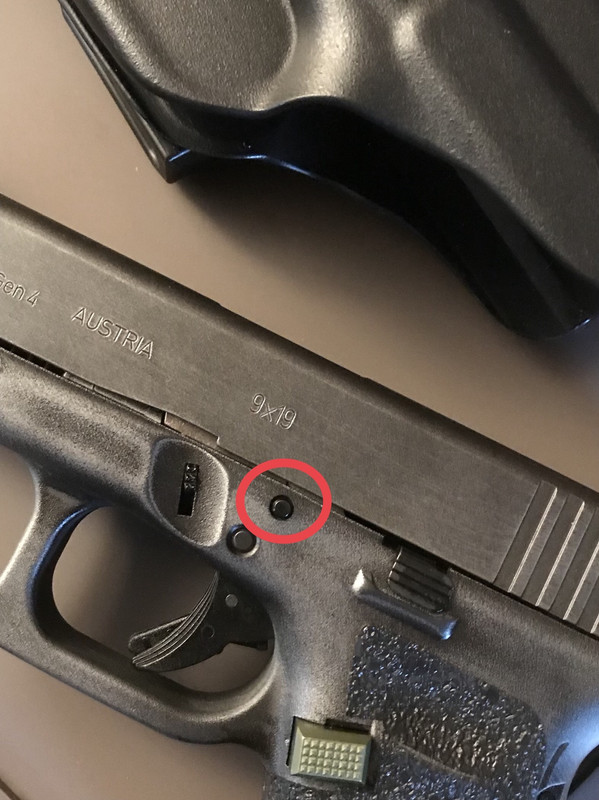
The pin that’s circled starts to walk out while shooting. I’ve only had it to the range twice since I got it any ideas?


Glocktalk is a forum community dedicated to Glock enthusiasts. Come join the discussion about Glock pistols and rifles, optics, hunting, gunsmithing, styles, reviews, accessories, and more!
I had one of these a while back. Was talking to fastbolt about it at one point, and he suggested replacing the locking block, which solved the problem. I think I had tried multiple new pins with the block. And the block probably had over 100k, so to paraphrase fb, I got my money's worth.^^^ Likely the hole "stretched" / got oblong from use.
OP if a new pin doesn't do it, can apply clear nail polish to one end before fully seating it in, or a new locking block apparently
The nail polish has held in a pin for hundreds of rounds now, a new pin didn't correct it so it's likely the locking block hole is my guess
When my Glock 19 Gen 3 was new it walked during the first 50 rounds. I pushed it back and never had a problem since.The pin that’s circled starts to walk out while shooting. I’ve only had it to the range twice since I got it any ideas?
